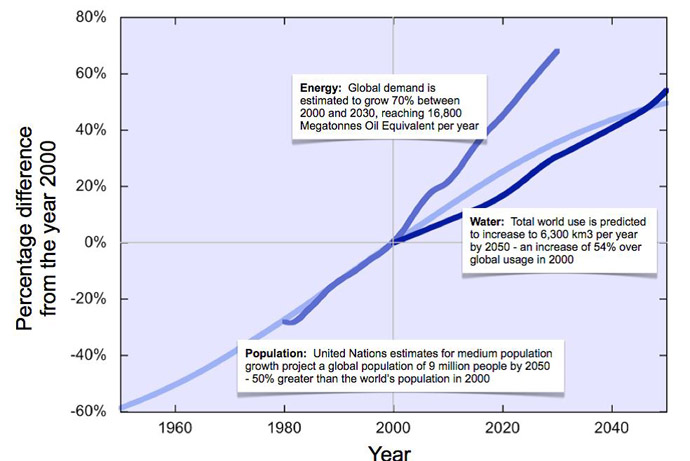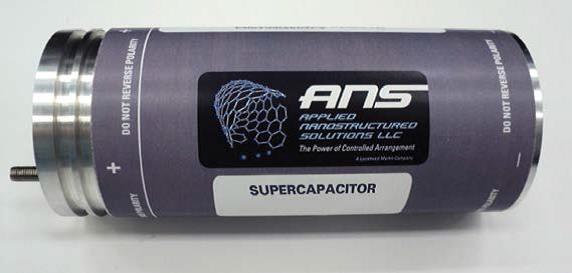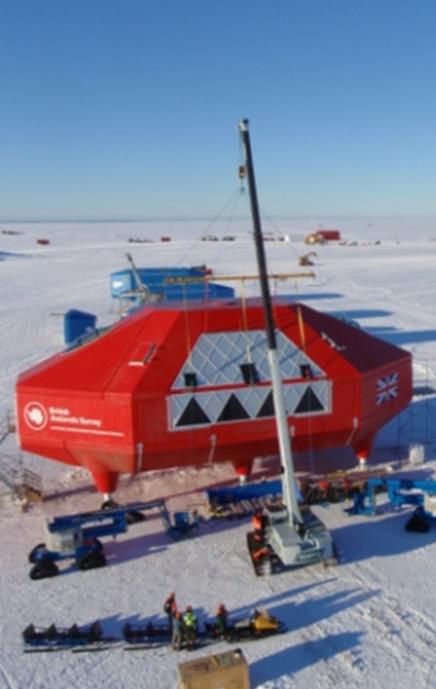The nanotechnology energy revolution
Nighttime energy usage in global cities (NASA Earth Observatory/NOAA NGDC – 2012)
Nanotechnology is the ability to engineer and create useful materials at the nanoscale (100,000 times smaller than the diameter of a human hair) to take advantage of enhanced properties not present in their bulk counterparts. It is a disruptive technology, a new technology that unexpectedly displaces an established technology, and an enabling technology, one that can be applied to existing technologies to make them better.
Nanotechnology is described in a recent GAO report, “as a future megatrend that will potentially match or surpass the digital revolution’s effect on society and the economy bringing new opportunities, ‘disruptive innovation,’ jobs creation, and diverse societal benefits.”
Energy is key area where nanotechnology offers solutions. The late Dr. Richard Smalley from Rice University, who received his Nobel Laureate for synthesis of fullerenes, a type of carbon nanomaterial, is quoted as saying, “Energy plays a key role in the quality of our environment, the prevention of disease, and so on; down the entire list of global concerns…. Energy is probably the single most important factor that impacts the prosperity of any society.”[i]
Imagine a future world without abundant, low-cost, clean energy. Manufacturing would be constrained, as would the jobs tied to manufacturing. A lack of energy would limit the ability to pump water from wells and surface waters, treat it and provide clean water to a growing populace. Pumping water for irrigation of crops would be restricted. Transport of food and manufactured goods to cities would be diminished. A lack of energy would seriously curtail treatment of sewage. The list goes on. Without sufficient energy, water and food resources, maintaining a safe, clean and healthy environment will be compromised, and the superior lifestyle we expect our future cities to provide will be threatened. Since 2008, for the first time in history, the majority of the world’s population has lived in cities. It is estimated that around three out of every five people will live in an urban area by 2030.[ii]
Demand for energy is not going to decrease. Worldwide energy usage is on track to increase by roughly 40% in the next 20 years and to nearly double by 2050.[iii] To ensure that our future cities remain viable, sustainable entities, innovative solutions to generate, store, transmit, and conserve energy must be developed. Many of these solutions will have their foundations in new nanomaterials being developed now.
Nanotechnology research and commercial production ramping up
The amount of nanotechnology-related research that is currently underway is staggering. According to Statnano, there were over 118,000 ISI indexed nanotechnology articles published worldwide in 2014 – 140% more than in 2010. The 2015 US Federal Budget provides more than $1.5 billion for the National Nanotechnology Initiative (NNI), which supports nanoscale science and engineering R&D at 11 federal agencies.[iv] Corporate spending on nanotechnology R&D is also increasing dramatically across all geographies. A December 2013 study by Lux Research, funded by the US National Science Foundation and the US Nanotechnology Coordinating Office, showed that global corporate nanotechnology R&D funding reached $10 billion in 2012.[v] Much of this research is focused on energy and is providing unprecedented breakthroughs in energy production, conversion, storage, and transport.
The Lux report also showed that global funding for emerging nanotechnology has increased by 40 to 45% each year for 2010-2012. It pointed out that revenue from nano-enabled products grew worldwide from $339 billion in 2010 to $731 billion in 2012 and to more than $1 trillion in 2013, and predicts that in 2018 the global value of nano-enabled products, nano-intermediates, and nanomaterials will reach $4.4 trillion.
Nanotechnology will be part of the solution in meeting the world’s energy demands
There are many approaches to meeting the world’s energy demands, including developing new energy sources and conserving the energy supplies we already have. Nanotechnology is not the whole answer, but it is a key part of the solution to help the world meet humanity’s rapidly growing energy needs.
Just a few of the sustainable, nanotechnology-enabled breakthroughs that are on the horizon and that AECOM will be evaluating and employing over the next few years to respond to critical energy challenges are listed below.
Transparent solar cells (University of California Los Angeles)
Nanotechnology and energy generation
Solar cells made of new nanomaterials continue to break efficiency records. As new manufacturing methods are coming online, costs will drop and their use will increase. Nano-enabled paints will not only be self-cleaning, but will also generate electricity to power our houses and decrease stress on the grid. Nano-enabled fabrics are under development and will be used in our clothing to generate electricity to power our mobile devices. New nano-metamaterials are being developed for use in roads, automobiles and power plants and will be able to convert excess heat and even pressure directly into electricity – energy harvesting.
Nanomaterials are currently being used to enhance crude oil recovery. New nanocatalysts will enable more efficient conversion of this crude oil into fossil fuels.
Fuel cell technology is being advanced by nanotechnology-related breakthroughs. New nano-catalysts will allow for enhanced production of “clean” fuels like hydrogen and ethanol from biomass and other sources. There are even nano-catalysts that have shown promise in converting waste gases like carbon monoxide from vehicles, power plants and manufacturing facilities into ethanol.
Applied Nano Solutions Supercapacitor (Lockheed-Martin Subsidiary)
Nanotechnology and energy storage
Breakthroughs in new energy storage devices are difficult to track since they seemingly occur every day! Scientists are designing new batteries using nanomaterials that make them lighter with significantly more energy density and higher efficiency. A new paper-like nanomaterial for lithium-ion batteries that could boost electric vehicle range was recently announced. The problems with battery deterioration due to heat generation during charging and use may have been solved with incorporation of a new unique nanofiber.
Super and ultracapacitors are being made with nanomaterials that will allow storage of tremendous quantities of power and be able to release that power to the grid in a controlled manner. New supercapicator arrays will allow portable power storage and distribution at point of use – ushering in a new form of emergency power supplies.
And new breakthroughs are being made using carbon-nanotube-enabled through-flow batteries that are well suited to store electricity produced by wind and solar installations.
16 gauge wire made from carbon nanotubes (www.nano.gov)
Nanotechnology and energy transmission
New nanomaterials are being used in development of near-superconducting materials which will outperform copper wire and increase the efficiency of the new transmission lines required to meet ever-growing energy demands. Nanosensors will be used to manage the grid.
Research is also beginning on wireless energy transmission, using microwaves, lasers and other electromagnetic energy sources. Nano-enabled components will play a key role in the development of this technology.
Nanotechnology and energy conservation – another source of energy
AECOM has unique experience utilizing nano-enabled materials in our designs and specifications to reduce energy footprints. There are significant opportunities for use of more efficient nano construction materials such as nano-aerogel insulation, the most thermally efficient material known; nano-enabled LED and OLED lighting, which is significantly more efficient than fluorescent; nano-enabled thermochromic windows insulation; and nanoconcrete, which is stronger, more weather resistant and more thermally efficient.
The Halley VI Research Station in Antarctica, engineered by AECOM, features panels of translucent Nanogel Aerogel.
Carbon nanotube wire may replace copper in the windings of electric motors – making them more efficient. Nano coatings are now used on engine components to reduce friction. New nano additives are being used in fuel to enhance combustion, contributing to a gain in fuel efficiency.
Notes
[i] Future Global Energy Prosperity: The Terawatt Challenge, Richard Smalley, Materials Research Society Bulletin, Vol 30, June 2005
[ii] Silver–Haired Surfers, John Beard World Health Organization, One, AECOM’s e-magazine, Issue 7 — December 2013
[iii] Nanotechnology Research Directions for Societal Needs in 2020 -Retrospective and Outlook, Mihail C. Roco ed., World Technology Evaluation Center, Inc., October 2010
[iv] http://www.nano.gov/about-nni/what/funding
[v] Nanotechnology Update: Corporations Up Their Spending as Revenues for Nano-enabled Products Increase, Hilary Flynn, Lead Analyst, Lux Research, U.S. National Nanotechnology Coordination Office and U.S. National Science Foundation, December 2013
Nanotechnology on the Connected Cities blog
For future cities, think small, as in nano
Additional Information Resources
- Nanotechnology and the As Built Environment: Investing in Green Infrastructure, Crystal Research Associates’ and Livingston Securities’, second edition, December 2012.
- Application of Nanotechnologies in the Energy Sector, Hessian Ministry of Economy, Transport Urban and Regional Development, Volume 9, August 2008.
- Global Energy Architecture Performance Index Report 2015, World Economic Forum, December 2014.
- Annual Energy Outlook 2014 – With Projections to 2040, U.S. Energy Information Administration, Department of Energy, April 2014.
- Nanotechnology and Energy, National Nanotechnology Coordination Office, January 2012.
 Bill Looney (bill.looney@aecom.com) is a senior program manager, Environment, and director of the Nanotechnology Initiative, AECOM.
Bill Looney (bill.looney@aecom.com) is a senior program manager, Environment, and director of the Nanotechnology Initiative, AECOM.











